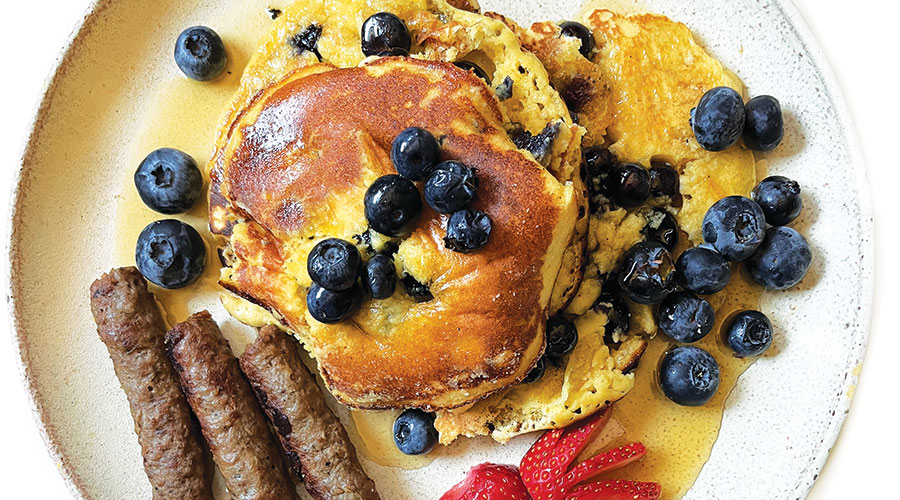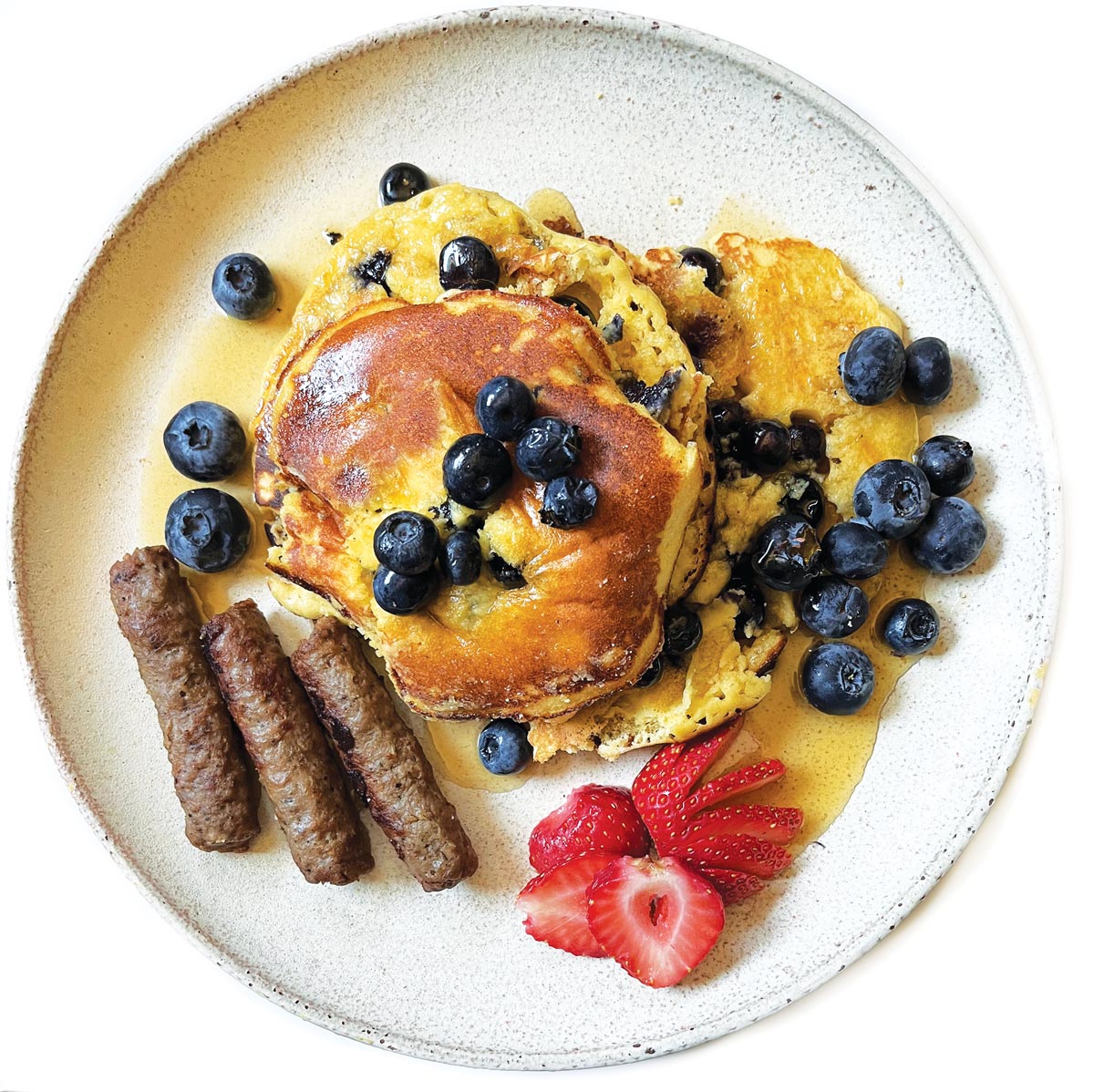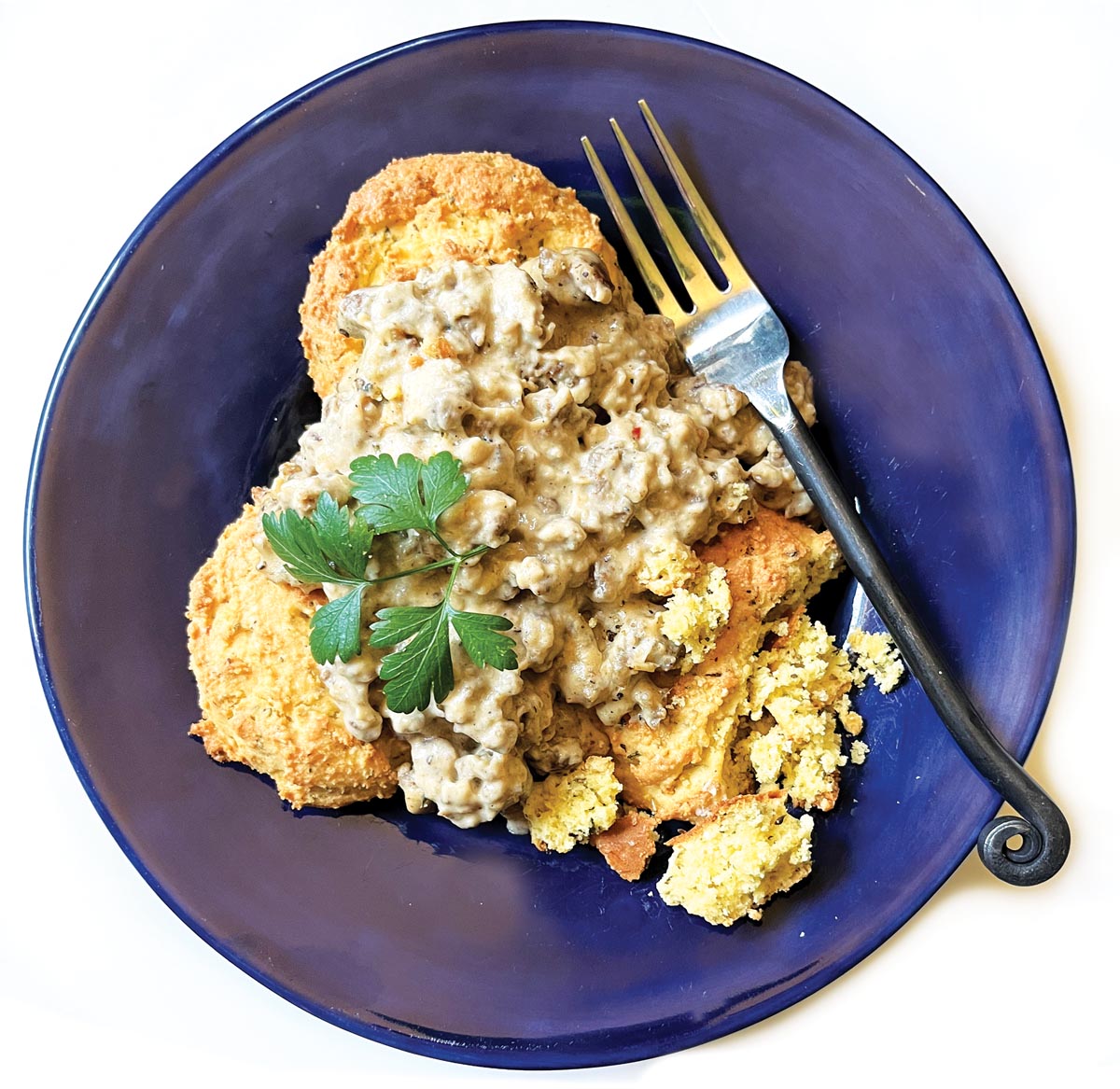
The Carb Challenge
By Tod Stigall
Photos by Meda Kessler
A few years back, I was diagnosed with diabetes, a disease that runs in my family.
Regular blood tests had warned me that it was slowly taking hold, but it wasn’t until my numbers crossed a critical line that I realized I needed to get serious about my health.
My doctor challenged me to keep the diabetes under control with diet and exercise. I accepted and vowed to do both. Working with a dietitian helped me understand food and how to balance blood sugar.
But I have a history of never sticking to a diet. For me to have a healthy future, this had to be a fundamental and lifelong change. Then came COVID; diabetics were in the high-risk category, and that got my attention. At-home quarantine meant that I ate out much less and cooked much more. I became very aware of what was going into my food and how to make it taste good while keeping my blood sugar in check.
Fortunately, the keto and gluten-free movements meant new low- and no-carb products were on the market.
A keto diet (high fat and protein plus low-carb) might help some people lose weight, but it is dangerous for a diabetic, because it can cause blood sugar to drop too low. But some products were perfect for me, especially almond flour. Bread is no longer part of my regular diet, but having a wheat-flour replacement lets me bake quick breads that are as good or better than the real deal. My breakfasts now regularly include drop biscuits, cheese and jalapeno muffins, pancakes with a side of sausage. I have even found a purveyor of sweet corn extract, and I have come up with an almond flour corn cake as a substitute for cornbread.
I now read recipes and think of ways to make low-carb versions. That means using spaghetti squash for pasta, although I have recently found a carb-friendly brand (Carba-Nada, recommended by a Central Market staff foodie who also is diabetic) that tastes more like the real thing. As for figuring out substitutes for all-purpose flour, I use finely chopped pecans, walnuts and almonds for breading. I switch out starchy items such as potatoes with eggplant, which is filling and low-carb.
Probably the most important change is that I have trained my brain to not compare what I used to eat to the lower-carb version.
And yes, cheating happens, but not too often. I eat the occasional mashed potatoes without guilt because my doctor is happy with my numbers. I am, too, but I’m sticking with the new eating habit, because I actually like the food.
Tod Stigall writes about wine, which is low-carb, for 360 West.
Here are recipes for my favorite weekend breakfasts. (The amount of flour used in the gravy is minimal, so it doesn’t figure into carb counting.)
Almond Flour Blueberry Pancakes
Makes 2 servings; 20 carbs per serving
- 1 cup almond flour
- ½ teaspoon baking powder
- ¼ teaspoon kosher salt
- 1 tablespoon sugar substitute (Swerve or Splenda)
- 2 eggs
- ¼ cup buttermilk
- 1 teaspoon vanilla extract
- 1 teaspoon coconut oil (melted and cooled but still liquid)
- Fresh blueberries
In a medium bowl, whisk together first four ingredients. In a separate bowl, add remaining ingredients, except blueberries, and whisk until thoroughly combined. Add dry mixture to wet ingredients; stir to mix. Use a nonstick griddle or skillet, or add a small amount of canola oil to a regular skillet, and set over medium heat. When the pan is hot, add generous spoonfuls of batter to create small pancakes. Drop small handfuls of blueberries onto each pancake. Cook for 2 to 3 minutes until little bubbles start to form. Flip each pancake and let cook 1 to 2 minutes more. Serve with sugar-free syrup and a side of sausage or bacon.


Herbed Almond Flour Drop Biscuits and Sausage Gravy
Makes 2 to 3 servings; 28 carbs per serving
Drop biscuits
- 1 cup almond flour
- 1 teaspoon baking powder
- ¼ teaspoon kosher salt
- 1 tablespoon finely minced fresh rosemary
(or dried) - 1 tablespoon fresh thyme (or dried)
- 1 large egg, whisked
- 2 tablespoons sour cream
- 2½ tablespoons unsalted butter (melted and slightly cooled, but still liquid)
Heat oven to 350 degrees. In a medium bowl, whisk together dry ingredients. In a separate medium bowl, whisk together the first two wet ingredients, then add the cooled butter. Add the dry ingredients to the wet ingredients and combine well. Shape soft dough with a metal ring or round cookie cutter or drop large tablespoons onto a lightly oiled or parchment-covered baking sheet. Bake approximately 15 minutes until firm and golden on top.
Sausage gravy
- 8 ounces ground breakfast sausage
- 2 tablespoons all-purpose flour
- 1 cup 2 percent milk (see Note)
- ¼ cup heavy cream
- Dash Worcestershire sauce
- Salt and pepper, to taste
Note This recipe makes a thicker gravy. Thin by slightly increasing milk/cream quantity or slightly decreasing the flour.
Add sausage to a heavy 10-inch skillet over medium heat. Break up the meat and stir until thoroughly cooked. Drain off excess fat, leaving about a tablespoon. Add flour to sausage and cook for about 3 minutes over medium heat. Add milk and heavy cream, stirring constantly. As the milk mixture thickens, reduce heat to medium-low. Continue stirring and add Worcestershire sauce, salt and pepper (I recommend lots of pepper). To serve, pour gravy over drop biscuits.
